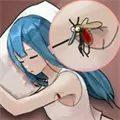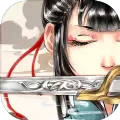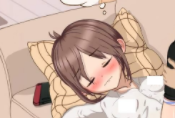毕业季--DIY毕业照
时间:2025-07-30 作者:游乐小编
本项目针对疫情期间毕业生无法拍摄毕业照的遗憾,提供DIY毕业照解决方案。通过AI换lian将个人人脸合成到样本图,再经毕业服装抠图与合成、人体抠图与学校背景合成,完成毕业照制作。使用paddlehub等工具实现,但存在服装学科颜色、帽子垂穗处理等需完善的瑕疵,最终祝福毕业生前程似锦。

项目简介
由于疫情的影响,许多毕业生他们可能都没办法拥有一张属于自己的毕业照,这将成为许多人说遗憾。于是便做了这样一个DIY毕业照的项目,最后祝福各位毕业生前程似锦,万事如意。
效果展示
人脸照片:

合成毕业照:
学士服:

硕士服:

博士服:

(PS:示例图片均来源于互联网,如有侵权,请联系删除)
一、安装必要的包
In [1]
!pip install --upgrade paddlehub -i https://mirror.baidu.com/pypi/simple!hub install deeplabv3p_xception65_humanseg==1.1.2
二、AI换lian
把自己的脸合成到样本图上
只需修改im1,im2
im1:自己脸的图片
im2:样本图
In [ ]
import cv2import numpy as npimport paddlehub as hub
In [ ]
def get_image_size(image): """ 获取图片大小(高度,宽度) :param image: image :return: (高度,宽度) """ image_size = (image.shape[0], image.shape[1]) return image_sizedef get_face_landmarks(image): """ 获取人脸标志,68个特征点 :param image: image :param face_detector: dlib.get_frontal_face_detector :param shape_predictor: dlib.shape_predictor :return: np.array([[],[]]), 68个特征点 """ dets = face_landmark.keypoint_detection([image]) num_faces = len(dets[0]['data'][0]) if num_faces == 0: print("Sorry, there were no faces found.") return None # shape = shape_predictor(image, dets[0]) face_landmarks = np.array([[p[0], p[1]] for p in dets[0]['data'][0]]) return face_landmarksdef get_face_mask(image_size, face_landmarks): """ 获取人脸掩模 :param image_size: 图片大小 :param face_landmarks: 68个特征点 :return: image_mask, 掩模图片 """ mask = np.zeros(image_size, dtype=np.int32) points = np.concatenate([face_landmarks[0:16], face_landmarks[26:17:-1]]) points = np.array(points, dtype=np.int32) cv2.fillPoly(img=mask, pts=[points], color=255) # mask = np.zeros(image_size, dtype=np.uint8) # points = cv2.convexHull(face_landmarks) # 凸包 # cv2.fillConvexPoly(mask, points, color=255) return mask.astype(np.uint8)def get_affine_image(image1, image2, face_landmarks1, face_landmarks2): """ 获取图片1仿射变换后的图片 :param image1: 图片1, 要进行仿射变换的图片 :param image2: 图片2, 只要用来获取图片大小,生成与之大小相同的仿射变换图片 :param face_landmarks1: 图片1的人脸特征点 :param face_landmarks2: 图片2的人脸特征点 :return: 仿射变换后的图片 """ three_points_index = [18, 8, 25] M = cv2.getAffineTransform(face_landmarks1[three_points_index].astype(np.float32), face_landmarks2[three_points_index].astype(np.float32)) dsize = (image2.shape[1], image2.shape[0]) affine_image = cv2.warpAffine(image1, M, dsize) return affine_image.astype(np.uint8)def get_mask_center_point(image_mask): """ 获取掩模的中心点坐标 :param image_mask: 掩模图片 :return: 掩模中心 """ image_mask_index = np.argwhere(image_mask > 0) miny, minx = np.min(image_mask_index, axis=0) maxy, maxx = np.max(image_mask_index, axis=0) center_point = ((maxx + minx) // 2, (maxy + miny) // 2) return center_pointdef get_mask_union(mask1, mask2): """ 获取两个掩模掩盖部分的并集 :param mask1: mask_image, 掩模1 :param mask2: mask_image, 掩模2 :return: 两个掩模掩盖部分的并集 """ mask = np.min([mask1, mask2], axis=0) # 掩盖部分并集 mask = ((cv2.blur(mask, (5, 5)) == 255) * 255).astype(np.uint8) # 缩小掩模大小 mask = cv2.blur(mask, (3, 3)).astype(np.uint8) # 模糊掩模 return maskdef skin_color_adjustment(im1, im2, mask=None): """ 肤色调整 :param im1: 图片1 :param im2: 图片2 :param mask: 人脸 mask. 如果存在,使用人脸部分均值来求肤色变换系数;否则,使用高斯模糊来求肤色变换系数 :return: 根据图片2的颜色调整的图片1 """ if mask is None: im1_ksize = 55 im2_ksize = 55 im1_factor = cv2.GaussianBlur(im1, (im1_ksize, im1_ksize), 0).astype(np.float) im2_factor = cv2.GaussianBlur(im2, (im2_ksize, im2_ksize), 0).astype(np.float) else: im1_face_image = cv2.bitwise_and(im1, im1, mask=mask) im2_face_image = cv2.bitwise_and(im2, im2, mask=mask) im1_factor = np.mean(im1_face_image, axis=(0, 1)) im2_factor = np.mean(im2_face_image, axis=(0, 1)) im1 = np.clip((im1.astype(np.float) * im2_factor / np.clip(im1_factor, 1e-6, None)), 0, 255).astype(np.uint8) return im1def main(): im1 = cv2.imread("face.png") # face_image im1 = cv2.resize(im1, (600, im1.shape[0] * 600 // im1.shape[1])) landmarks1 = get_face_landmarks(im1) # 68_face_landmarks if landmarks1 is None: print('{}:检测不到人脸'.format(image_face_path)) exit(1) im1_size = get_image_size(im1) # 脸图大小 im1_mask = get_face_mask(im1_size, landmarks1) # 脸图人脸掩模 # ret_val, im2 = cam.read() # camera_image im2 = cv2.imread("di_zhao.png") landmarks2 = get_face_landmarks(im2) # 68_face_landmarks if landmarks2 is not None: im2_size = get_image_size(im2) # 摄像头图片大小 im2_mask = get_face_mask(im2_size, landmarks2) # 摄像头图片人脸掩模 affine_im1 = get_affine_image(im1, im2, landmarks1, landmarks2) # im1(脸图)仿射变换后的图片 affine_im1_mask = get_affine_image(im1_mask, im2, landmarks1, landmarks2) # im1(脸图)仿射变换后的图片的人脸掩模 union_mask = get_mask_union(im2_mask, affine_im1_mask) # 掩模合并 # affine_im1_face_image = cv2.bitwise_and(affine_im1, affine_im1, mask=union_mask) # im1(脸图)的脸 # im2_face_image = cv2.bitwise_and(im2, im2, mask=union_mask) # im2(摄像头图片)的脸 # cv2.imshow('affine_im1_face_image', affine_im1_face_image) # cv2.imshow('im2_face_image', im2_face_image) affine_im1 = skin_color_adjustment(affine_im1, im2, mask=union_mask) # 肤色调整 point = get_mask_center_point(affine_im1_mask) # im1(脸图)仿射变换后的图片的人脸掩模的中心点 seamless_im = cv2.seamlessClone(affine_im1, im2, mask=union_mask, p=point, flags=cv2.NORMAL_CLONE) # 进行泊松融合 # cv2.imshow('affine_im1', affine_im1) # cv2.imshow('im2', im2) # cv2.imshow('seamless_im', seamless_im) cv2.imwrite('hecheng.jpg', seamless_im) # plt.imshow(seamless_im) # plt.show() else: cv2.imshow('seamless_im', im2) # plt.imshow(im2) # plt.show()if __name__ == '__main__': face_landmark = hub.Module(name="face_landmark_localization") main() [2024-06-07 11:22:24,086] [ WARNING] - The _initialize method in HubModule will soon be deprecated, you can use the __init__() to handle the initialization of the object[2024-06-07 11:22:24,177] [ WARNING] - The _initialize method in HubModule will soon be deprecated, you can use the __init__() to handle the initialization of the object
三、毕业服装抠图与合成
In [ ]
#调用一些相关的包import matplotlibimport matplotlib.pyplot as plt import matplotlib.image as mpimg import cv2from PIL import Imageimport numpy as npimport paddlehub as hub
In [ ]
# S1 衣服图片抠图 ---------------------------------------------------------------------module = hub.Module(name="deeplabv3p_xception65_humanseg")res = module.segmentation(paths = ["bo.png"], visualization=True, output_dir='pic_output')res_img_path = './pic_output/bo.png'img = mpimg.imread(res_img_path)plt.figure(figsize=(10, 10))plt.imshow(img)plt.axis('off')plt.show() [2024-06-07 16:11:24,181] [ WARNING] - The _initialize method in HubModule will soon be deprecated, you can use the __init__() to handle the initialization of the object
In [ ]
# S2 显示原始图片 ---------------------------------------------------------------------# 原始图片test_img_path = ["hecheng.jpg"]#import numpy as np #wpb addimg = mpimg.imread(test_img_path[0]) # 展示 原始图片plt.figure(figsize=(10,10))plt.imshow(img) #wpb comment#plt.imshow(img.astype(np.uint8))#wpb addplt.axis('off') plt.show() In [ ]
# S3 获取关键点图像 ---------------------------------------------------------------------module = hub.Module(name="human_pose_estimation_resnet50_mpii")res = module.keypoint_detection(paths = ["hecheng.jpg"], visualization=True, output_dir='pic_output')res_img_path = './pic_output/hecheng.jpg'img = mpimg.imread(res_img_path)plt.figure(figsize=(10, 10))plt.imshow(img)plt.axis('off')plt.show()print(res) [2024-06-07 16:12:03,050] [ WARNING] - The _initialize method in HubModule will soon be deprecated, you can use the __init__() to handle the initialization of the object
image saved in pic_output/hechengtime=1654589524.jpg
[{'path': 'hecheng.jpg', 'data': OrderedDict([('left_ankle', [205, 698]), ('left_knee', [200, 698]), ('left_hip', [211, 490]), ('right_hip', [269, 482]), ('right_knee', [274, 705]), ('right_ankle', [264, 297]), ('pelvis', [227, 490]), ('thorax', [242, 319]), ('upper_neck', [242, 267]), ('head_top', [242, 133]), ('right_wrist', [190, 467]), ('right_elbow', [110, 423]), ('right_shoulder', [153, 319]), ('left_shoulder', [332, 319]), ('left_elbow', [369, 430]), ('left_wrist', [279, 467])])}] In [ ]
# S4 换衣服 ---------------------------------------------------------------------#获取衣服位置left_posx=res[0]["data"]["right_shoulder"][0]left_posy=res[0]["data"]["right_shoulder"][1]right_posx=res[0]["data"]["left_ankle"][0]right_posy=res[0]["data"]["left_ankle"][1]print(left_posx, left_posy)print(right_posx, right_posy)#读取图片Image1 = Image.open('hecheng.jpg') Image1copy = Image1.copy() Image2 = Image.open('pic_output/bo.png') Image2copy = Image2.copy() #resize clothes 可以对抠出的服装图片进行放大缩小width,height=Image1copy.sizenewsize=(int(width*1.0),int(height*0.9))Image2copy = Image2.resize(newsize)#制定要粘贴左上角坐标 可以抠出的服装图片进行移动position=(int(left_posx*-0.07),int(left_posy*0.55) ) # ,right_posx, right_posyprint(position)# 换衣服 , 应该还有更好的方法进行照片合成Image1copy.paste(Image2copy,position,Image2copy) # 将翻转后图像region 粘贴到 原图im 中的 box位置 # 存为新文件 #Image1copy.save('./pic_output/newclothes.png') Image1copy.save('./pic_output/newclothes_bo.jpg') # 显示穿着新衣的照片img = mpimg.imread('./pic_output/newclothes_bo.jpg') plt.figure(figsize=(10,10))plt.imshow(img) plt.axis('off') plt.show() 153 319205 698(-10, 175)
四、合成学校背景图片
In [2]
import paddlehub as hubimport matplotlib.pyplot as plt import matplotlib.image as mpimg import cv2from PIL import Imageimport numpy as npimport math
In [7]
import paddlehub as hubimport numpy as npimport matplotlib.pyplot as plt import matplotlib.image as mpimg #加载预训练模型"deeplabv3p_xception65_humanseghumanseg = hub.Module(name="deeplabv3p_xception65_humanseg")#可以添加多张图片img_path = ["hecheng.jpg"]results = humanseg.segmentation(data={"image":img_path},visualization=True, output_dir='humanseg_output')#遍历图片抠图结果for i in range(len(img_path)): #呈现原图 img1 = mpimg.imread(img_path[i]) plt.figure(figsize=(10,10)) plt.imshow(img1) plt.axis('off') plt.show() result=results[i] print(result) #打印 抠图结果的数字列表 # print(result["data"].shape) #以图形方式呈现结果 prediction = result["data"] plt.imshow(prediction) plt.show() #运用线性代数实现:使用抠图数据剪切原图 newimg = np.zeros(img1.shape) newimg[:,:,0] = img1[:,:,0] * (prediction>0) newimg[:,:,1] = img1[:,:,1] * (prediction>0) newimg[:,:,2] = img1[:,:,2] * (prediction>0) newimg = newimg.astype(np.uint8) # 抠图结果展示 plt.figure(figsize=(10,10)) plt.imshow(newimg) plt.axis('off') plt.show() [2024-06-07 16:48:59,533] [ WARNING] - The _initialize method in HubModule will soon be deprecated, you can use the __init__() to handle the initialization of the object
{'save_path': 'humanseg_output/hecheng.png', 'data': array([[0., 0., 0., ..., 0., 0., 0.], [0., 0., 0., ..., 0., 0., 0.], [0., 0., 0., ..., 0., 0., 0.], ..., [0., 0., 0., ..., 0., 0., 0.], [0., 0., 0., ..., 0., 0., 0.], [0., 0., 0., ..., 0., 0., 0.]], dtype=float32)} In [8]
base_image = Image.open(f'xuexiao.jpeg').convert('RGB')fore_image = Image.open(f'humanseg_output/hecheng.png').resize(base_image.size)# 图片加权合成scope_map = np.array(fore_image)[:,:,-1] / 255scope_map = scope_map[:,:,np.newaxis]scope_map = np.repeat(scope_map, repeats=3, axis=2)res_image = np.multiply(scope_map, np.array(fore_image)[:,:,:3]) + np.multiply((1-scope_map), np.array(base_image))#保存图片res_image = Image.fromarray(np.uint8(res_image))res_image.save(f"humanseg_output/hecheng_xue.jpg")print('照片合成完毕')plt.figure(figsize=(10,10))plt.imshow(res_image) plt.axis('off') plt.show() 照片合成完毕
总结
本次项目主要使用了脸部抠图+合成、衣服抠图+合成、人体抠图+背景合成,这三大块的功能来完成。但是仍然存在瑕疵。例如服装上学科代表的颜色和帽子垂穗颜色不能更换、以及最后合成后的帽子垂穗会消失,这都是后面需要完善的地方。
小编推荐:
热门推荐
更多 热门文章
更多 -
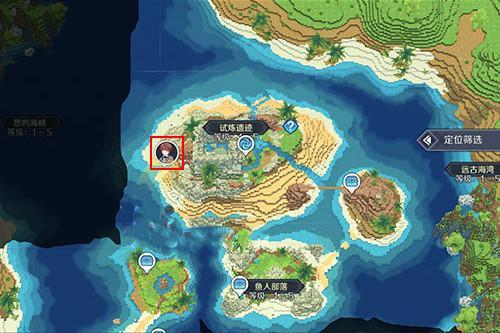
- 神角技巧试炼岛高级宝箱在什么位置
-
2021-11-05 11:52
手游攻略
-
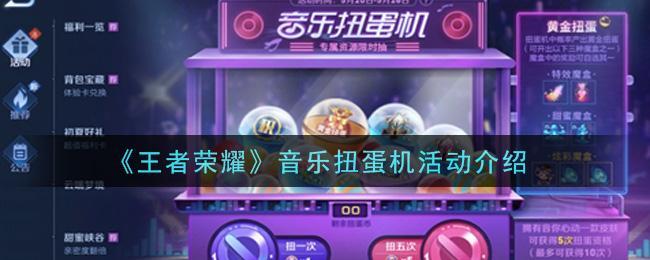
- 王者荣耀音乐扭蛋机活动内容奖励详解
-
2021-11-19 18:38
手游攻略
-
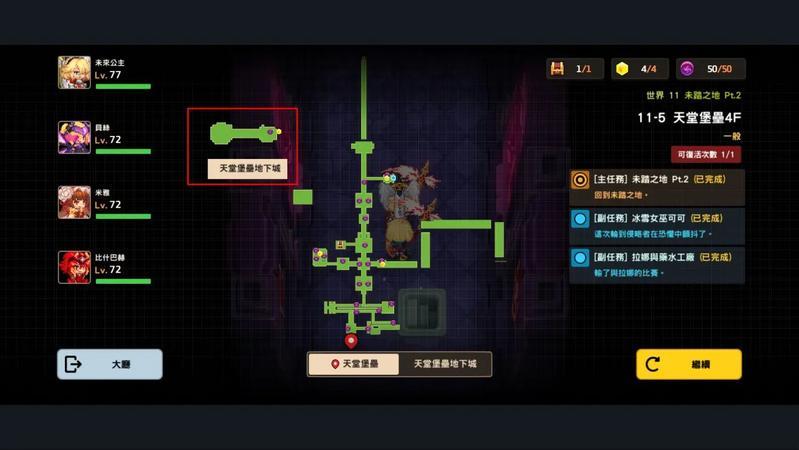
- 坎公骑冠剑11
-
2021-10-31 23:18
手游攻略
-

- 原神卡肉是什么意思
-
2022-06-03 14:46
游戏资讯
-

- 《臭作》之100%全完整攻略
-
2025-06-28 12:37
单机攻略


